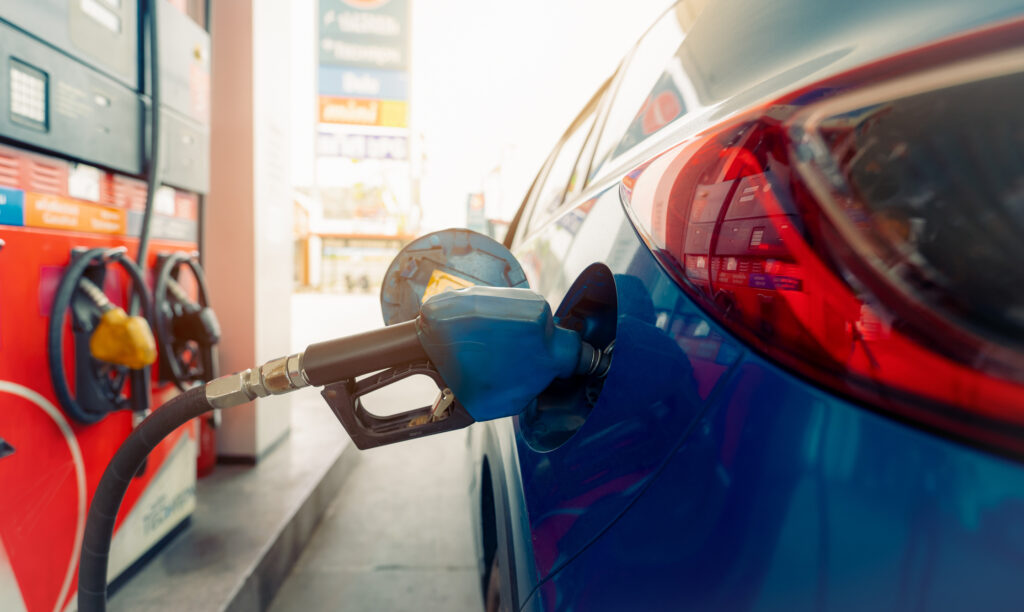The Upside of High Gasoline Prices (Yes, they do exist)

Even though gas prices have fallen since their peak in 2022, when Russia’s invasion of Ukraine caused prices to spike, filling up at the pump can still feel like a major financial commitment.
In fact, however, the price of gas has remained remarkably stable when adjusted for inflation, peaking in recent history not last year but in 2008, according to the U.S. Department of Energy. Even when measured against incomes, gas prices are not much higher now than they were in the 1990s.
Indeed, there’s an argument that gas prices should be a lot higher to reflect the true cost of driving.
To give some perspective on the price of gasoline, we turned to Marlon Boarnet, Director of the METRANS Transportation Consortium at USC and a professor at the USC Sol Price School of Public Policy. Boarnet is an expert on urban economics, urban growth patterns, transportation and land use, and has served on the National Research Council committee that authored the report, “Driving and the Built Environment.”
What is the upside of higher gas prices?
No one likes high gas prices. But gas prices have long been too low. Let me explain: When you drive you contribute to traffic congestion, pollute the air, and at times contribute to safety risks and noise pollution. None of that is reflected in the cost of driving. Economists call these externalities – side effects of driving that are unpriced. Put simply, we have too much traffic congestion, too much air pollution, too many cars traveling too fast or too near sidewalks or bike lanes, and too much traffic noise. We all value our cars – I do too – but driving does not reflect those harms, and when something is underpriced, we get too much.
If all the external costs are not reflected in the price of gasoline, is it still a bargain at $4 a gallon nationally, even $5.40 in California?
Motor fuel is currently too cheap in that it does not reflect environmental costs. Does that mean $4 is a bargain? Only if we accept that the bargain comes paired with 122-degree days across much of India, California wildfires that burn a million acres, and persistent western U.S. droughts. That doesn’t sound like a good deal to me.
The International Monetary Fund estimates that subsidies to fossil fuel companies amounted to $7 trillion in 2022, the vast majority of which were the result of not having to pay for environmental damage caused by their products. But wouldn’t gas prices skyrocket if those subsidies were removed?
Withdrawing subsidies from fossil fuels and incorporating carbon fees to charge for the environmental damage created by fossil fuels would cause prices to increase. The questions are how much and how quickly?
One problem with gasoline prices is that they are extremely volatile. Gasoline prices moved both up and down by at least 10%, within the year, every year but one since 2012. Had I tracked fuel prices from 2000 to 2012, I would have found the same price volatility.
Extreme price volatility makes it difficult for consumers to plan. Every time gas prices rise, consumers don’t have incentives to buy a more fuel-efficient car. That’s because experience has taught that with each price rise, a price decline will soon follow.

A measured, long-term approach to increasing gas prices would encourage car companies to build more fuel-efficient vehicles while providing incentives for people to buy those cars.
No one – I hope – is suggesting that we double the price of gasoline tomorrow. But the federal gasoline tax has been fixed at 18.4 cents per gallon since 1994, with no adjustment for inflation. If, starting in 1994, we had indexed the gas tax for inflation and then increased that gas tax an additional 5% per year, the gas tax would be almost a dollar per gallon today. That change, phased in smoothly over decades, would be gradual enough that consumers and car makers could adapt, while providing a good start toward incorporating the environmental costs of fuel consumption.
A few years of gas tax increases that mirror the low-end of price increases that consumers have seen since 2012 (and even much earlier) would quickly put us on the right path.
How expensive would gas have to be for there to be a noticeable and sustained decrease in traffic as more people either stayed home or used public transportation?
Raising gasoline prices, by itself, is not a way to get people to stop driving. When gas prices go up, most people cannot stop driving because they have no other way to get around. Even if we doubled the price of gasoline, the best research shows that people would reduce driving by about 5% in the near-term.
Read the original USC Price story.